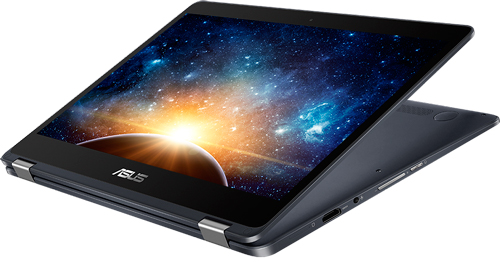Windows 10 on Snapdragon Reaches a Milestone
A year after unveiling a Microsoft-Qualcomm partnership to bring Windows 10 to the Snapdragon platform and create a new class of Windows on ARM devices, ASUS and HP are showing off systems with shipments set to begin next year.
The ASUS NovaGo, a 2-in-1 convertible, will be available in early 2018. The HP Envy x2 Windows on Snapdragon Mobile PC is supposed to ship in the spring. Both devices were on display for hands-on use at Qualcomm's Snapdragon Technology Summit in Hawaii this week.
Here are six big takeaways from the Windows on Snapdragon developments:
1. This is a category-creation effort.
This is an important new platform for Windows 10 and a potentially significant new class of devices for business and home use. For a while, the market has been mostly segmented into PCs, tablets and smartphones. The Snapdragon-based devices could create some crossover possibilities in the in-between spaces -- less expensive, bulky or battery-draining than even the smallest and lightest 2-in-1 PCs but more capable than tablets or larger smartphones.
2. It's not Microsoft's first ARM rodeo.
Microsoft did try to do Windows on ARM before with the Surface RT, and it was not a hit. Surface RT eventually went away and Microsoft took some bruising earnings writeoffs in the process. The major limitation of the RT platform was its inability to run regular Windows applications, having only supported modern apps. Those apps had usability problems, suffered from developer disinterest, and buyers were confused about the incompatibilities.
 The new ASUS NovaGo.
The new ASUS NovaGo.
This time Microsoft is coming at the ARM category in a more traditional way for Redmond -- working closely with the platform provider and enabling OEM partners. The new devices will come pre-installed with Windows 10 S, which has some app compatibility limitations of its own, although they are not as severe as the ones RT presented. Windows 10 Pro is supposed to be an upgrade option, as well.
3. The platform provides some interesting capabilities.
Undergirding the Windows 10 on Snapdragon systems is the Qualcomm Snapdragon 835 Mobile PC platform, as well as Qualcomm LTE modems. Microsoft bills the systems as Always Connected PCs. Terry Myerson, executive vice president of the Windows and Devices group at Microsoft, presented the platform pitch this way: "Always Connected PCs are instantly on, always connected with a week of battery life...these Always PCs have huge benefits for organizations, enabling a new culture of work, better security and lower costs for IT."
In the case of the NovaGo, ASUS is claiming 22 hours of battery life and 30 days of standby. Adding in capabilities from the Snapdragon X16LTE modem, as well as on-board Wi-Fi and other technologies, Samsung says the system is capable of LTE download speeds of up to 1Gbps and Wi-Fi download speeds of up to 867Mbps. In other words, LTE downloads are faster than Wi-Fi downloads. ASUS claims an LTE download for a two-hour movie is around 10 seconds.
4. Designs aren't breaking new ground yet.
Designs shown so far are variations on existing PCs from ASUS and HP. While there is the potential for some rethinking of the PC based on the technology platform, the first few models are pretty familiar.
5. Performance is worth watching.
Performance will be an issue, which raises questions about where these systems will find their niche. Early reviews indicate the PCs will be plenty fast enough for Web browsing and e-mail. But the Windows emulation overhead, along with the repurposing of mobile chipsets for PC use, mean the systems won't be as capable as run-of-the-mill PCs at offline processing.
6. Price is a big question.
The other issue determining who ultimately buys these Windows 10 on Snapdragon devices is price. ASUS is charging $599 for 4GB of RAM and 64GB of storage and $799 for 8GB of RAM and 256GB of storage. That's fairly steep to compete with Chromebooks and even mid-range Windows PCs.
On the other hand, LTE connectivity is a wild card in valuing the system. HP and Lenovo (which is also working on a device) haven't released their pricing yet. Where those device prices land will indicate where the Windows 10 on Snapdragon category might find its niche.
Posted by Scott Bekker on December 06, 2017